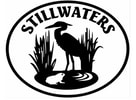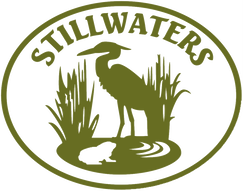SUMMER AT STILLWATERS – IT’S FINALLY HERE!
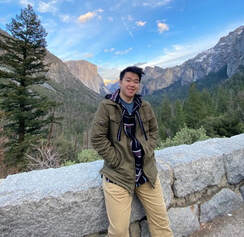
Stillwaters has a full summer planned with three new interns to train! There are also opportunities for volunteers to work on new projects in the salt marsh, estuary and possibly both Carpenter and Crabapple Creeks. Meet our interns at our beautifully updated (thanks to an intern) website on our College Internship page under the Education tab (Click Here).
In addition to our annual survey of salt marsh vegetation, UW student interns Jeremy Leung and David Lin will be working throughout the summer on additional vegetation studies. Jeremy’s work will provide more opportunities for the many volunteers interested in learning about salt marsh vegetation and the changes Stillwaters has been observing since the culvert removals. Jeremy will be doing the critical work to analyze annual salt marsh veg survey data that has been collected
In addition to our annual survey of salt marsh vegetation, UW student interns Jeremy Leung and David Lin will be working throughout the summer on additional vegetation studies. Jeremy’s work will provide more opportunities for the many volunteers interested in learning about salt marsh vegetation and the changes Stillwaters has been observing since the culvert removals. Jeremy will be doing the critical work to analyze annual salt marsh veg survey data that has been collected
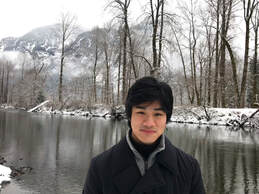
David Lin is interested in the continuing expansion of our marsh now that natural tidal flows have been restored. He will do follow-up work on the Sitka spruce project and similar studies of other parts of the marsh where we have observed the boundary between forest and marsh changing.
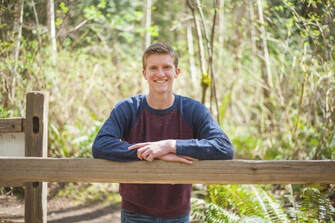
Our third intern, a Kingston High graduate and Montana State University geology student, Thomas Brown, will be continuing studies of changes in sediment and sediment movement in the marsh, estuary and cove. His work will include volunteer opportunities for beach profiling, sediment collection at the West Kingston bridge, and the first sorting of West Kingston Bridge sediments to see whether the culvert removal is reducing the deposition of fine sediment in the salt marsh as it should. Also, Thomas is using the sediment data generated last summer to look at how forage fish spawning habitat has changed since the 2012 culvert removal.
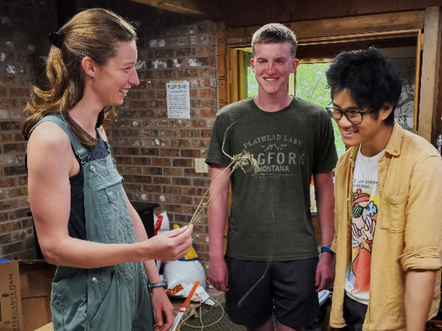
Contrary to popular belief . . . Colleges do not remunerate Stillwaters for hosting interns. Our support comes entirely from small private grants and donations from community members like yourself, who recognize the importance of educating our next generation of resource managers, policy makers, business owners, etc. in local environmental and sustainability issues.
Demand for our internships is growing – we had six interns in 2021 and two during winter quarter 2022. In addition, we had three interns that worked with us for more than one quarter this year. We are asking you to help us meet the costs of providing these opportunities for students, which include ferry passes, access to specialized computer programs and equipment that needs maintenance, and staff time to train students and coordinate volunteer help for them. Although interns benefit Stillwaters in innumerable ways, including data collection and analysis, literature reviews, and producing outreach materials like our new website www.stillwatersec.org, they each cost us about $1500 per quarter to train and mentor.
Demand for our internships is growing – we had six interns in 2021 and two during winter quarter 2022. In addition, we had three interns that worked with us for more than one quarter this year. We are asking you to help us meet the costs of providing these opportunities for students, which include ferry passes, access to specialized computer programs and equipment that needs maintenance, and staff time to train students and coordinate volunteer help for them. Although interns benefit Stillwaters in innumerable ways, including data collection and analysis, literature reviews, and producing outreach materials like our new website www.stillwatersec.org, they each cost us about $1500 per quarter to train and mentor.
And more activity for this summer: We are hoping to add new volunteers to monitor stream health in Crabapple Creek (and possibly additional sites on Carpenter Creek). Suzanne Arness has granted us access to her property at the mouth of Crabapple Creek, the remainder of which flows through the Arborwood development above the Kingston Estuary. We are seeking permission (and monetary support) from Arborwood developers to access their properties for water quality monitoring as well, to be better able to identify - and allow them to more quickly rectify - the source of any problems we may detect at the mouth of the creek. We are hoping they will see this as an opportunity to be more transparent with concerned neighbors about how well existing environmental guidelines are protecting the creek during construction. We are also hoping to develop a relationship that will allow us to educate the developers and start educating new homeowners immediately about how best to live on a salmon stream and protect local water, forest and wildlife resources in their new community.
Other outreach we would like to do this summer includes community presentations about changes in the marsh, estuary and cove since the culvert removals observed by Stillwaters volunteers, interns and staff. Also, we would like to do more of our popular salt marsh tours.
However, all of Stillwaters’ activities rely on some volunteer involvement and – most importantly - donations from our supporters to pay for staff time spent on coordination of outreach and supervision of research with the interns. We will not be able to do the programs we want to do without funding for our staff!
Other outreach we would like to do this summer includes community presentations about changes in the marsh, estuary and cove since the culvert removals observed by Stillwaters volunteers, interns and staff. Also, we would like to do more of our popular salt marsh tours.
However, all of Stillwaters’ activities rely on some volunteer involvement and – most importantly - donations from our supporters to pay for staff time spent on coordination of outreach and supervision of research with the interns. We will not be able to do the programs we want to do without funding for our staff!
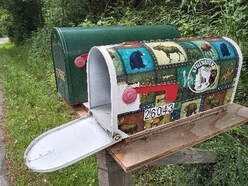
Please make your summer donation now! Our mail box needs your attention all year and it’s pretty neglected right now. (You’ll notice we have a new mailbox and address for the same location, but don’t worry – the old one works, too!) Of course our website has links for you to donate online, which is great, too! (www.stillwatersec.org)
Thanks for your help to get through the summer by investing in this great place for our interns and volunteers!
Thanks for your help to get through the summer by investing in this great place for our interns and volunteers!
For the staff and board,
Naomi Maasberg, Treasurer
PS. Have you considered a year-round pledge? If you are not doing this already, would you consider a monthly or quarterly pledge? This would help us with our continual cash flow problem – and make it easier for you, too. Just go to the donation page from our website (www.stillwatersec.org) and click on your choice under “Recurring Option”. Let us know if you want any help; we can set it up for you. Contact me at [email protected].
PS. Have you considered a year-round pledge? If you are not doing this already, would you consider a monthly or quarterly pledge? This would help us with our continual cash flow problem – and make it easier for you, too. Just go to the donation page from our website (www.stillwatersec.org) and click on your choice under “Recurring Option”. Let us know if you want any help; we can set it up for you. Contact me at [email protected].
